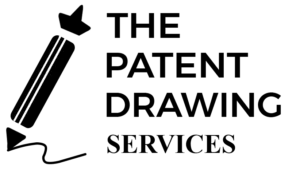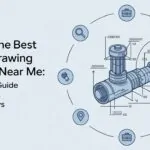As a patent attorney or agent, your expertise is your firm’s most valuable asset. Your time is best spent on high-stakes tasks: crafting airtight claims, advising clients on IP strategy, and navigating complex USPTO procedures. Yet, too often, precious hours are consumed by a necessary but time-intensive task: creating compliant patent drawings.
What if this operational bottleneck is secretly eroding your firm’s bottom line?
The truth is, handling patent drawings in-house is rarely the cost-effective choice it appears to be. In today’s competitive legal landscape, strategic outsourcing is not just a convenience—it’s a powerful tool for increasing profitability. Here’s how delegating this critical task to specialized draftsmen can directly boost your firm’s revenue.
The Hidden Cost of In-House Drawing Production
Many firms consider in-house drawings to “save money.” But let’s break down the true economics:
- The Billable Hour Drain: This is the most significant factor. The time a patent professional spends wrestling with CAD software or reviewing countless drawing revisions is time not spent on billable work. If your billing rate is $300+/hour, and you spend 3-5 hours per application on drawings, that’s $900-$1,500+ in lost revenue per patent.
- Software and Training Costs: Professional-grade illustration software requires expensive annual licenses. Furthermore, staff must be continuously trained on both the software and the ever-evolving drawing standards of the USPTO, WIPO, and other global patent offices.
- Overhead and Management: This includes the costs of hiring, salaries, benefits, and hardware for dedicated staff. It also includes the hidden cost of your own time managing the drawing process instead of managing client relationships.
The Profitability Equation: Outsourcing as a Strategic Advantage
Shifting to a specialized patent drawing services provider transforms these variable, high-cost activities into a predictable, fixed expense. This simple shift unlocks several profit-boosting advantages:
1. Reclaim Billable Hours for High-Value Work
This is the most direct path to increased profit. By outsourcing drawings, you immediately free up 3-5 hours (or more) per application. What can you do with that reclaimed time?
- Draft more claims: More thorough claim sets lead to stronger patents and happier clients.
- Take on more clients: Increase your firm’s capacity without adding expensive new staff.
- Deepen client relationships: Provide more strategic counsel and proactive advice, increasing client retention and referral rates.
The Bottom Line: You convert previously non-billable hours into high-margin, billable work.
2. Eliminate Costly Rejections and Delays
USPTO drawing rejections (Office Actions) due to non-compliance are a major profitability killer. They delay issuance, require you to spend non-billable time responding, and frustrate clients.
Professional drawing services exist solely to navigate the strict rules of patent offices. They guarantee compliance, drastically reducing the risk of drawing-related rejections. This means:
- Faster application processing.
- Fewer administrative headaches.
- More efficient use of your docketing system.
The Bottom Line: You avoid the hidden tax of non-billable hours spent correcting preventable errors.
3. Gain a Scalable, Flexible Resource
Patent workflow is often unpredictable. You might have a quiet month followed by a flood of new filings.
An in-house illustrator represents a fixed cost, whether you have 5 drawings or 50 to produce. Outsourcing gives you a scalable, on-demand resource. You only pay for what you need, when you need it. This allows your firm to handle peak workloads effortlessly without the financial commitment and risk of a full-time employee.
The Bottom Line: You turn a fixed overhead cost into a variable, scalable expense, improving your firm’s financial agility.
4. Enhance Client Perception and Value
Submitting professionally prepared, flawless drawings signals competence and attention to detail. It strengthens your client’s confidence in your entire firm. This professionalism is often reflected in:
- Justification of your premium fees.
- Higher client satisfaction and retention.
- More referrals from impressed clients.
The Bottom Line: A superior end product enhances your brand value, allowing you to maintain and justify your billing rates.
Making the Switch: How to Start Outsourcing Confidently
Convinced but wary of the transition? Follow these steps:
- Choose a Specialized Provider: Look for a service with proven experience in both utility patent drawings and design patent drawings and a deep understanding of USPTO drawing rules. We also support trademark drawings for complete IP coverage.
- Start with a Trial: Outsource a single, complex application to test their quality, communication, and turnaround time. You can also check our previous blog on avoiding common drawing mistakes and previous blog on maximizing utility vs design figures for insights.
- Create a Clear Handoff Process: Provide clear sketches, photos, or markups. The better the information you provide, the more perfect the drafts will be on the first try.
- Integrate into Your Workflow: Make the service an extension of your team. Use their consistency to streamline your internal review process.
Invest in Your Expertise, Outsource the Rest
At its core, a law firm is a business. Profitability isn’t just about revenue; it’s about maximizing the return on your most valuable resource: your time.
Outsourcing patent drawings isn’t an expense—it’s a strategic investment. It’s a decision to stop spending $300/hour on a task that can be done for a fraction of the cost, thereby freeing you to do what you do best: practice law, win clients, and grow your firm.
Ready to stop leaving money on the drawing board? Contact us today for a free, no-obligation quote on your next project and experience the difference a professional service can make for your profitability.




